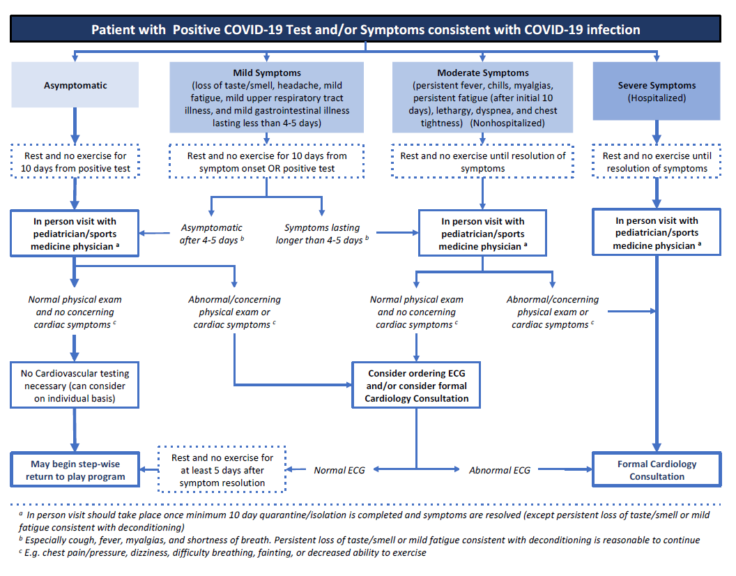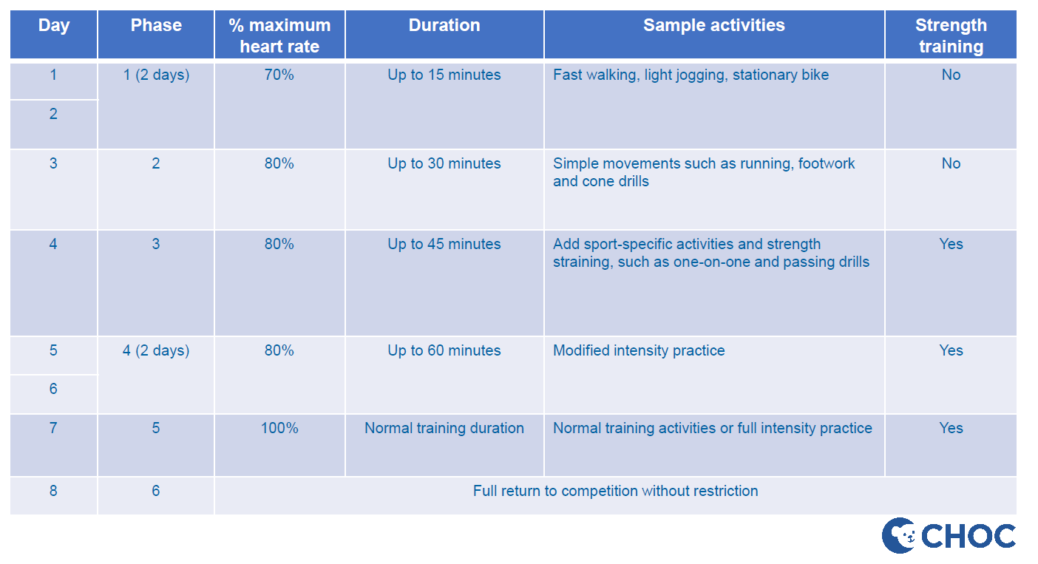While there is less data about pediatric patients, emerging evidence shows that people infected with COVID-19 are at increased risk for myocarditis. Because of this, it is important that pediatricians appropriately evaluate patients before they are cleared to return to play as sports resume after a prolonged COVID-prompted off season.
Here, Dr. Matthew Kornswiet, a sports pediatrician in the CHOC Primary Care Network, and Dr. Chris Koutures, a CHOC pediatrician and sports medicine specialist, share what providers ought to know when clearing young athletes or students for a return to sports following a COVID-19 infection.
Patients should be seen in the provider’s office for an in-person, formal evaluation and physical exam to determine clearance, recommend Drs. Kornswiet and Koutures. The following decision tree can aid in triaging patients, as well as providing consistent patient care. This decision tree is applicable to middle and high school athletes, as well as to those who compete in high-exertion activities and to other patients on an individual basis.
The California Interscholastic Federation recommends that if a patient’s infection was over three months ago, they had an asymptomatic, mild or moderate illness, and the patient has regained fitness or is back to full activity without symptoms, then they can return to sports as long as they have an active/recent preparticipation physical exam.

Once an athlete is cleared for a return to sports, Drs. Kornswiet and Koutures recommended that they go through a gradual and step-wise return to play. This is similar to the return-to-play protocol for concussions, and should be performed under the supervision of a physician and athletic trainer, if possible.

Each phase should last at least 24 to 48 hours and should not cause return of symptoms. If the athlete/student experiences a return of symptoms or develops unexpected fatigue, dizziness, difficulty breathing, chest pain/pressure, decreased exercise tolerance, or fainting, then they should stop their return progression and return to their physician for further evaluation.
These protocols are not substitutes for medical judgment, and additional queries should be directed to pediatric cardiologists or sports medicine specialists.
Following are more general return-to-sports guidance for parents and coaches:




